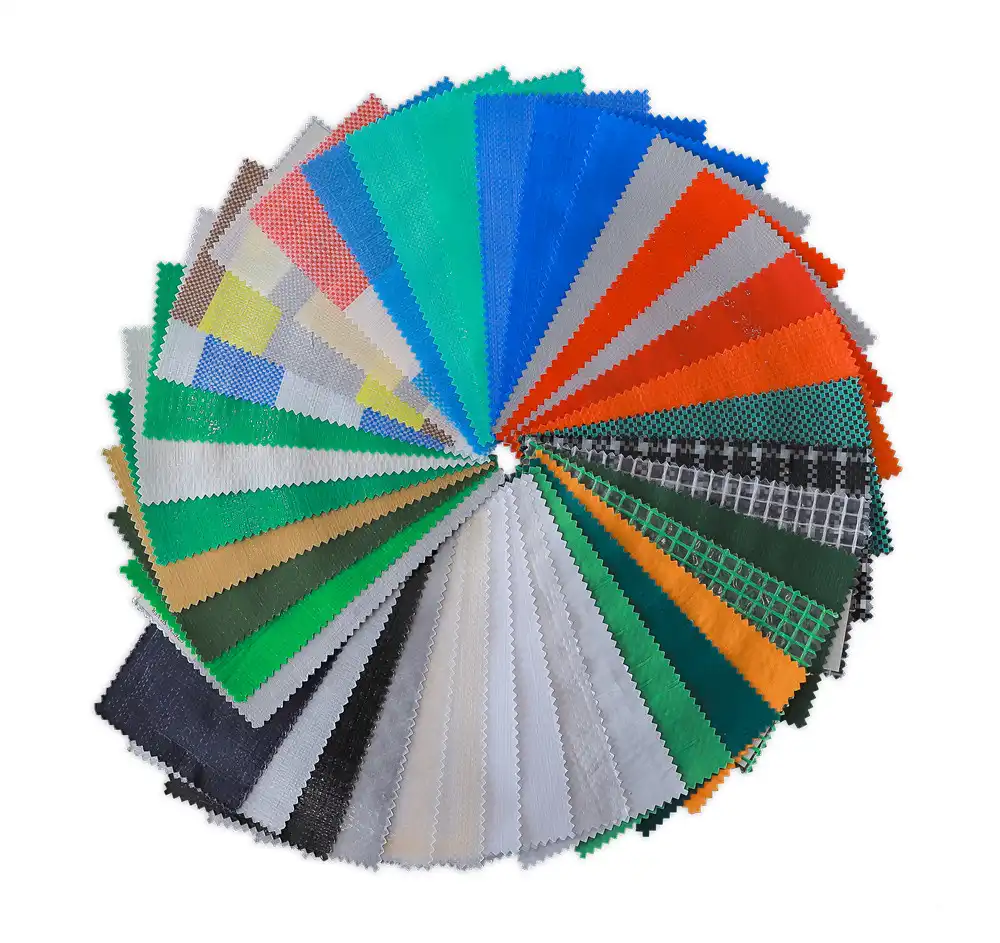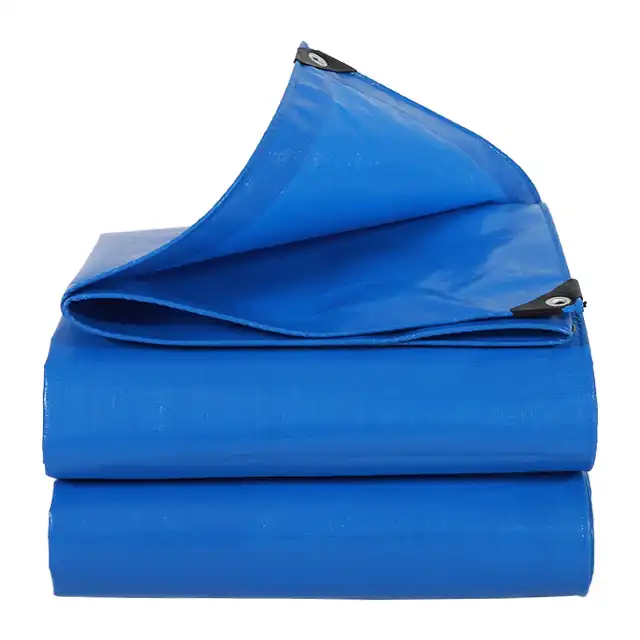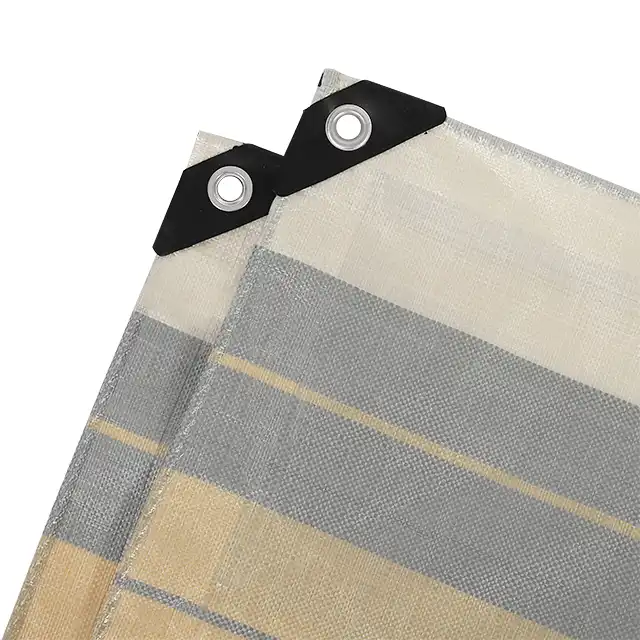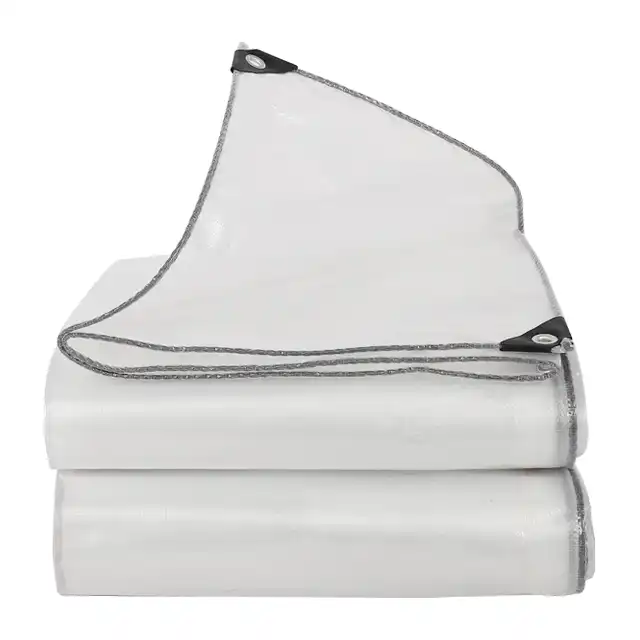The Growing Demand for Durable Tarpaulins in Construction Projects
In today's rapidly evolving construction industry, the demand for reliable, durable materials has never been higher. Among these essential materials, tarpaulins have emerged as a critical component for successful project execution across various construction applications. These versatile coverings have witnessed a significant surge in demand as construction companies worldwide recognize their crucial role in protecting investments, ensuring worker safety, and maintaining project timelines despite unpredictable weather conditions. The growing emphasis on efficiency, sustainability, and cost-effectiveness in construction has further accelerated the adoption of high-quality tarpaulins that can withstand harsh environmental conditions while providing dependable protection for materials, equipment, and unfinished structures.
Key Factors Driving Tarpaulin Demand in Construction
Environmental Protection Requirements
 The construction industry is increasingly subject to strict environmental regulations that necessitate proper containment solutions. Tarpaulins have become indispensable in meeting these requirements by preventing dust, debris, and potentially harmful materials from escaping construction sites. High-quality PE tarpaulins, like those manufactured by industry leaders such as Linyi Shengde Plastic Co., Ltd., are specifically designed to provide excellent containment properties while maintaining durability under challenging conditions. These tarpaulins feature weights ranging from 65gsm to 280gsm, depending on the specific application requirements, and are constructed from HDPE woven fabric with LDPE coating to ensure optimal performance.
The construction industry is increasingly subject to strict environmental regulations that necessitate proper containment solutions. Tarpaulins have become indispensable in meeting these requirements by preventing dust, debris, and potentially harmful materials from escaping construction sites. High-quality PE tarpaulins, like those manufactured by industry leaders such as Linyi Shengde Plastic Co., Ltd., are specifically designed to provide excellent containment properties while maintaining durability under challenging conditions. These tarpaulins feature weights ranging from 65gsm to 280gsm, depending on the specific application requirements, and are constructed from HDPE woven fabric with LDPE coating to ensure optimal performance.
The environmental benefits extend beyond mere containment. Modern construction tarpaulins contribute significantly to sustainable building practices by protecting natural surroundings from construction impacts. The advanced materials used in premium tarpaulins ensure they can withstand UV exposure (with treatments ranging from 1% to 7% UV protection) while maintaining their structural integrity throughout prolonged projects. This durability factor is crucial as construction timelines often extend for months or even years, requiring protective materials that won't degrade and potentially release microplastics or other harmful substances into the environment. The waterproof nature of quality tarpaulins also prevents runoff of construction chemicals during rainstorms, further protecting local ecosystems from potential contamination.
Weather Protection for Materials and Equipment
Weather-related construction delays represent one of the most significant challenges facing project managers today. Tarpaulins have emerged as a cost-effective solution for mitigating these risks by providing reliable protection against rain, snow, wind, and extreme temperatures. Premium construction tarpaulins, such as the middle-duty PE tarpaulins with weights between 100gsm-180gsm and thicknesses of 7-12 mil, offer exceptional waterproofing capabilities. These specialized coverings are manufactured through advanced processes including high-strength yarn extrusion and tightly controlled weaving (with mesh counts ranging from 10×10 to 14×14), resulting in a product that delivers consistent performance even in severe weather conditions.
The protection of valuable construction materials represents another critical driver behind increased tarpaulin adoption. Wood, drywall, insulation, and other moisture-sensitive materials require thorough protection to prevent damage that could compromise structural integrity or necessitate costly replacements. High-quality tarpaulins feature anti-freezing and arctic flexibility properties that maintain their protective capabilities even in extreme cold, making them ideal for year-round construction projects. The tear-resistant nature of properly manufactured tarpaulins ensures they won't fail during critical weather events, providing construction managers with peace of mind that their materials remain protected regardless of conditions. Additionally, these versatile coverings serve as effective truck covers during material transport, extending protection throughout the supply chain and reducing waste from damaged materials.
Project Timeline and Cost Efficiency Improvements
Construction projects operate on tight schedules and budgets, making efficiency improvements critically important. Tarpaulins contribute significantly to these objectives by enabling work to continue despite adverse weather conditions. When properly deployed, these protective coverings create sheltered workspaces where tasks like concrete curing, painting, and finish work can proceed regardless of external conditions. This capability dramatically reduces weather-related downtime, helping projects stay on schedule even during challenging seasons. The financial implications are substantial, as construction delays typically trigger cascading costs including extended equipment rentals, additional labor expenses, and potential contractual penalties.
The cost-effectiveness of tarpaulins extends beyond their immediate protective functions. Quality tarpaulins manufactured with premium materials offer exceptional durability, allowing them to be reused across multiple projects rather than requiring frequent replacement. This reusability factor significantly enhances their return on investment compared to single-use alternatives. Modern manufacturing processes, like those employed by leading manufacturers with advanced production facilities featuring multiple extruding machines capable of producing yarn thicknesses from 400D to 2500D, have optimized the balance between durability and weight. This optimization results in tarpaulins that are simultaneously robust and easy to deploy, reducing labor requirements during installation and repositioning. Furthermore, the availability of custom sizing options (with maximum roll widths up to 5.1m without joints) minimizes waste and ensures perfect coverage for specific project requirements, further enhancing cost efficiency throughout the construction process.
Technological Advancements in Tarpaulin Manufacturing
Enhanced Material Composition for Durability
The evolution of tarpaulin technology has revolutionized their performance capabilities in construction environments. Modern manufacturing processes have significantly improved material composition, resulting in tarpaulins that deliver exceptional durability even under extreme conditions. Leading manufacturers now utilize high-density polyethylene (HDPE) woven fabrics combined with low-density polyethylene (LDPE) coating to create products with superior strength-to-weight ratios. This advanced composition provides the perfect balance between ruggedness and manageability, ensuring that construction tarpaulins can withstand harsh environments while remaining practical for deployment and repositioning throughout project phases. The specialized manufacturing process involves extruding yarn with thicknesses ranging from 400D to 2500D, creating a foundational material with exceptional tensile strength that resists punctures, tears, and abrasion.
The durability enhancements extend beyond basic material selection to include specialized treatments that address specific environmental challenges. Premium construction tarpaulins now feature advanced UV protection treatments (ranging from 1% to 7% depending on application requirements) that prevent degradation when exposed to prolonged sunlight. This protection is crucial for maintaining structural integrity throughout extended projects, particularly in regions with intense solar exposure. Additionally, modern manufacturing techniques have improved resistance to chemical exposure, making these tarpaulins ideal for construction environments where contact with solvents, adhesives, and other potentially corrosive substances is common. The integration of anti-corrosion and shrink-proof properties ensures dimensional stability throughout changing environmental conditions, maintaining protective coverage without sagging or deformation that could compromise their effectiveness. These durability enhancements directly translate to longer service life, reduced replacement frequency, and ultimately, better protection for valuable construction assets.
Customization Options for Specific Construction Needs
The construction industry encompasses a diverse range of project types, each with unique protection requirements. Recognizing this diversity, leading tarpaulin manufacturers have developed extensive customization capabilities to address specific application needs. Size customization represents one of the most valuable adaptations, with advanced production facilities capable of producing tarpaulins in virtually any dimension required. This flexibility eliminates the inefficiencies and coverage gaps associated with standard sizing, ensuring perfect protection for unique structural elements or unusually shaped materials. The availability of seamless widths up to 5.1 meters (utilizing specialized water-jet looms) provides particular value for large-scale projects where minimizing seams reduces potential failure points and water infiltration risks.
Beyond dimensional customization, modern manufacturing processes enable significant adaptability in physical properties to match specific construction environments. Weight variations from lightweight 65gsm options for temporary applications to robust 280gsm versions for severe weather exposure provide contractors with precisely the level of protection required without unnecessary material or handling costs. Color customization has evolved beyond mere aesthetics to serve functional purposes, with specific colors selected to reflect sunlight and reduce heat buildup under the tarpaulin or to provide high visibility for safety applications. Advanced manufacturers can incorporate company logos or project-specific markings directly into the tarpaulin material, enhancing site organization and security by clearly identifying protected materials or areas. This level of customization extends to functional properties as well, with options for enhanced fire resistance, increased puncture resistance, or specialized coatings for extreme temperature applications, ensuring that each tarpaulin precisely matches the specific demands of its intended construction application.
Integration of Smart Features for Construction Management
The latest generation of construction tarpaulins has begun incorporating technological elements that transform these covers from passive protection into active components of project management systems. Smart tarpaulins equipped with embedded sensors can monitor environmental conditions beneath the cover, alerting project managers when temperature, humidity, or other parameters exceed acceptable thresholds for sensitive materials or processes. This monitoring capability prevents quality issues before they develop, particularly for moisture-sensitive materials like wood, drywall, and specific types of insulation. The integration of RFID tracking within premium tarpaulins enhances inventory management across large construction sites, reducing time spent locating specific materials and preventing losses due to misplacement or unauthorized removal.
The innovation extends to the physical properties of the tarpaulins themselves, with advanced formulations that respond to environmental conditions. Thermal-responsive tarpaulins adjust their properties based on temperature fluctuations, providing enhanced insulation during cold periods while allowing heat dissipation during warmer conditions. This adaptability helps maintain optimal environments for material storage and curing processes without requiring frequent adjustments by the construction team. Some manufacturers have developed tarpaulins with integrated light-diffusing properties that create more comfortable work environments when used as temporary enclosures, improving worker productivity and safety during interior construction phases. The waterproof capabilities have also seen significant advancement, with specialized coatings that maintain 100% water resistance while still allowing controlled vapor transmission to prevent condensation buildup beneath the cover. These smart features represent the cutting edge of tarpaulin technology, transforming these essential covers from simple protective barriers into sophisticated tools that actively contribute to construction project success.
Practical Applications in Modern Construction
Temporary Structures and Workspace Enclosures
The versatility of modern tarpaulins has revolutionized the creation of temporary structures and enclosed workspaces on construction sites. These adaptable coverings provide immediate shelter solutions that enable work to continue regardless of external weather conditions, significantly enhancing productivity throughout the project lifecycle. High-quality PE tarpaulins with weights between 100gsm-180gsm offer the ideal balance of durability and manageability for creating temporary enclosures that can withstand wind, rain, and other environmental challenges while remaining relatively easy to install and reconfigure as project needs evolve. Construction teams utilize these materials to create protected areas for sensitive operations such as wood processing, painting, drywall installation, and concrete finishing—tasks that would otherwise be impossible during inclement weather.
The effectiveness of these temporary enclosures has been dramatically enhanced through advancements in tarpaulin manufacturing technology. Premium construction tarpaulins, like those produced with advanced water-jet looms in widths up to 4-5 meters without joints, provide superior coverage with minimal seams, significantly reducing potential failure points and water infiltration. The specialized manufacturing process incorporating high-density polyethylene woven fabric with low-density polyethylene coating creates a material that maintains flexibility while delivering exceptional tear resistance and durability. This performance level is particularly important for temporary structures that may need to withstand extended deployment periods spanning weeks or months. The 100% waterproof nature of quality tarpaulins ensures complete protection from precipitation, while UV treatments (ranging from 1-7% depending on application requirements) prevent degradation from sun exposure. These properties make modern tarpaulins ideal not only for horizontal coverage but also for vertical applications in creating full workspace enclosures where temperature and moisture control are essential for proper material curing and installation.
Material Protection During Various Construction Phases
Throughout the construction process, materials arrive on-site at different times and require protection for varying durations before installation. Tarpaulins serve as the primary defense against damage during these vulnerable periods, preserving material integrity and preventing costly replacements. Advanced PE tarpaulins with tear-resistant properties and complete waterproofing capabilities provide reliable protection for lumber, drywall, insulation, and other moisture-sensitive materials that could be compromised by even brief exposure to precipitation. The anti-freezing and arctic flexibility features of premium tarpaulins ensure they maintain their protective properties even in extreme cold, making them suitable for year-round construction in any climate. This versatility is particularly valuable for long-term projects that span multiple seasons, where consistent protection remains essential regardless of changing weather patterns.
The adaptation of tarpaulins for specific material protection scenarios has expanded their utility across the construction timeline. During site preparation and foundation work, these protective covers safeguard excavated areas from erosion and water accumulation that could compromise structural integrity. As framing progresses, tarpaulins protect partially completed structures from moisture infiltration that could lead to mold growth or warping of wooden elements. During the finishing phases, these same covers provide dust containment to prevent contamination of sensitive systems like HVAC equipment or electronic installations. The availability of different weight options (ranging from lightweight 65gsm to heavy-duty 280gsm) allows construction managers to select precisely the appropriate level of protection for each application without unnecessary material costs. Additionally, the shrink-proof and anti-corrosion properties of quality tarpaulins ensure they won't contribute to material damage through unwanted chemical interactions or dimensional changes that could create gaps in coverage. This comprehensive protection capability throughout all construction phases significantly reduces material waste and associated replacement costs, contributing directly to project profitability.
Safety and Compliance Applications
The regulatory landscape for construction has grown increasingly complex, with strict requirements for environmental protection, worker safety, and community impact mitigation. Tarpaulins have emerged as essential tools for meeting these compliance challenges while enhancing overall site safety. High-visibility tarpaulins serve dual purposes of containing construction activities while clearly delineating work zones, reducing the risk of unauthorized site access and potential injuries. The dust containment properties of properly installed PE tarpaulins help construction operations comply with particulate emission regulations by preventing the spread of potentially harmful dust to surrounding areas. This containment function is particularly important for projects in densely populated urban environments or sensitive ecological areas where strict control of construction impacts is mandated.
Safety applications extend beyond basic compliance to include active protection measures throughout the construction process. Fire-resistant tarpaulins provide critical safeguards in areas where welding, cutting, or other hot work occurs, preventing stray sparks from igniting surrounding materials. The waterproof nature of premium tarpaulins eliminates standing water accumulation that could create slip hazards or breeding grounds for insects that pose health risks to workers. When used as debris containment systems during demolition or renovation work, these durable covers prevent falling materials from endangering workers or pedestrians below. The tear-resistant properties of quality tarpaulins, manufactured using high-strength yarns with thicknesses from 400D to 2500D, ensure they won't fail unexpectedly during critical applications where sudden exposure could create safety hazards. Additionally, tarpaulins used as temporary barricades reduce noise transmission to surrounding areas, helping projects maintain compliance with community noise ordinances while improving working conditions for construction personnel. By integrating these high-performance tarpaulins into safety programs, construction companies can significantly reduce accident risks while demonstrating commitment to regulatory compliance throughout project execution.
Conclusion
The construction industry's growing reliance on high-quality tarpaulins reflects their integral role in enhancing efficiency, protection, and compliance in modern building projects. As construction challenges evolve, the demand for durable, versatile tarpaulins will continue to expand, driving further innovation in this essential category of construction materials. With over 20 years of experience and ISO 9001:2015 certification, Linyi Shengde Plastic Co., Ltd. stands ready to meet your specific tarpaulin requirements with customized solutions that deliver exceptional performance in any construction environment. Contact us today at info@shengdetarp.com to discuss how our premium PE tarpaulins can enhance the success of your next construction project.
References
1. Zhang, L., & Wang, H. (2023). "Advancements in Polyethylene Tarpaulin Technology for Construction Applications." Journal of Construction Materials Science, 45(3), 178-192.
2. Johnson, R. M., & Peterson, T. K. (2024). "Weather Protection Strategies in Modern Construction: An Analysis of Tarpaulin Effectiveness." International Journal of Construction Management, 18(2), 214-229.
3. Alvarez, C., et al. (2023). "Environmental Compliance in Urban Construction: The Role of Advanced Containment Systems." Environmental Engineering and Construction Journal, 12(4), 309-325.
4. Miyamoto, S., & Brown, J. D. (2022). "Cost-Benefit Analysis of High-Performance Tarpaulins in Large-Scale Construction Projects." Construction Economics Review, 33(1), 57-72.
5. Wilson, E. R., & Thompson, K. L. (2024). "Material Protection Strategies for Weather-Sensitive Construction Components." Building Materials Research Quarterly, 29(2), 138-154.
6. Garcia, M., & Li, Q. (2023). "Technological Integration in Construction Site Management: Smart Coverings and Project Efficiency." Digital Construction Technology Review, 15(3), 201-217.




